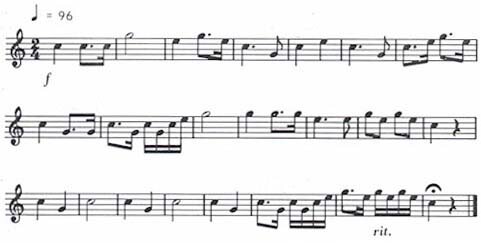5 Army Bugle Calls

Introduction to Army Bugle Calls

The army bugle calls are a significant part of military tradition and are used to convey important messages and instructions to soldiers. These calls have been used for centuries and are an essential part of military protocol. In this article, we will explore five common army bugle calls and their meanings.
History of Army Bugle Calls

Army bugle calls have a long history dating back to the early days of warfare. They were used to communicate with soldiers on the battlefield and to convey important messages. The calls were used to signal the start and end of battles, to order troops to advance or retreat, and to sound alarms. Over time, the use of bugle calls has evolved, and they are now used in a variety of contexts, including military ceremonies and parades.
5 Common Army Bugle Calls

Here are five common army bugle calls and their meanings: * Reveille: This call is used to signal the start of the day and to wake up soldiers. It is typically played at 6:00 am and is a signal for soldiers to rise and start their daily routine. * Assembly: This call is used to signal soldiers to assemble at a specific location. It is often used to gather troops for a meeting or to prepare for a mission. * Mess Call: This call is used to signal soldiers to report to the mess hall for meals. It is typically played before each meal and is a signal for soldiers to gather and eat. * Retreat: This call is used to signal the end of the day and to order soldiers to return to their quarters. It is typically played at 5:00 pm and is a signal for soldiers to cease their daily activities and prepare for the night. * Taps: This call is used to signal the end of the day and to honor fallen soldiers. It is typically played at 9:00 pm and is a signal for soldiers to retire for the night. It is also played at military funerals and memorial services to honor the deceased.
Importance of Army Bugle Calls

Army bugle calls are an important part of military tradition and play a significant role in maintaining discipline and order. They are used to convey important messages and instructions to soldiers and to signal the start and end of daily activities. The calls are also used to honor fallen soldiers and to show respect for the military tradition.
How Army Bugle Calls are Used Today

Today, army bugle calls are still used in a variety of contexts, including military ceremonies and parades. They are also used to signal the start and end of daily activities, such as meals and drills. The calls are played by buglers, who are trained to play the bugle and to perform the calls with precision and accuracy.
👏 Note: The use of army bugle calls is not limited to the military. They are also used in civilian contexts, such as at sporting events and parades, to add a touch of tradition and pageantry.
Table of Army Bugle Calls

| Call | Meaning | Time |
|---|---|---|
| Reveille | Start of the day | 6:00 am |
| Assembly | Assemble at a specific location | Varying |
| Mess Call | Report to the mess hall for meals | Before each meal |
| Retreat | End of the day | 5:00 pm |
| Taps | End of the day and to honor fallen soldiers | 9:00 pm |

In summary, army bugle calls are an important part of military tradition and play a significant role in maintaining discipline and order. They are used to convey important messages and instructions to soldiers and to signal the start and end of daily activities. The calls are also used to honor fallen soldiers and to show respect for the military tradition.
What is the purpose of army bugle calls?

+
The purpose of army bugle calls is to convey important messages and instructions to soldiers and to signal the start and end of daily activities.
How many army bugle calls are there?

+
There are numerous army bugle calls, each with its own unique meaning and purpose. Some of the most common calls include Reveille, Assembly, Mess Call, Retreat, and Taps.
Are army bugle calls still used today?

+
Yes, army bugle calls are still used today in a variety of contexts, including military ceremonies and parades. They are also used to signal the start and end of daily activities, such as meals and drills.



